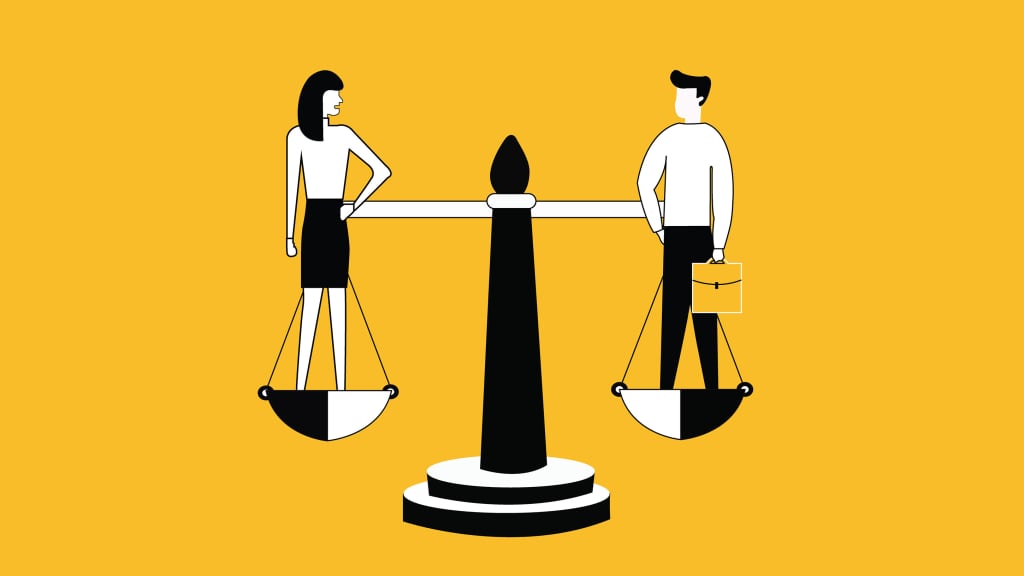The gender pay gap has been a topic of discussion for decades. The idea that payments to women are less than men for the same work has been repeated so often that it has become an unquestioned truth in many circles. However, as we delve deeper into the statistics and examine the factors that contribute to the gender pay gap, it becomes clear that the situation is far more complex than we might think. In this article, we will explore the myth of the gender pay gap and examine the realities that underlie it.
The Truth
To begin with, it’s important to note that the gender pay gap is not a simple matter of women being paid less than men for the same job. This is a common misunderstanding that media and politicians alike perpetuate. While it is true that, on average, women earn less than men, this gap is not solely due to discrimination or unfair treatment in the workplace. Rather, it is the result of a complex array of factors.
One of the primary contributors is the fact that women often choose to pursue different careers than men. While there are certainly exceptions, women are more likely to enter fields such as education and healthcare. These fields tend to pay less than male-dominated fields such as engineering, and technology.
While women earn more college degrees, they are still underrepresented in fields such as science, technology, engineering, and mathematics (STEM). These fields tend to be higher-paying, and women’s under representation can contribute to the overall pay gap. Additionally, women are more likely to take time off from work to care for children or elderly relatives. This can result in lower earnings over time.
Women of color, for example, experience a much wider pay gap than white women. This is due in part to the fact that there is a concentration of women of color in low-paying jobs. However they also face additional discrimination based on their race and ethnicity.

There is evidence to suggest that women are sometimes paid less than men for the same job. However, it is important to recognize that these instances are not representative of the entire workforce. This do not tell the whole story of the gender pay gap.
So why does the myth of the gender pay gap persist?
There are several factors at play here. One is the fact that the media tends to sensationalize statistics without providing context or explanation. When we hear that women earn 82 cents for every dollar that men earn, for example. We may assume that this means that payments to women are less for the same work. In reality, this statistic is an average that does not take into account the many factors that contribute to the pay gap.
Another issue is viewing women as a monolithic group, rather than recognizing the diversity of experiences and choices among women. When we talk about the gender pay gap, we often make assumptions about what women want or what their priorities are, without considering the myriad of factors that may influence their decisions. For example, some women may choose to work part-time or take time off to care for family members. Others however may prioritize career advancement and earning potential. By treating all women as if they have the same goals and preferences, we risk perpetuating harmful stereotypes and failing to address the complex realities of the gender pay gap.
Finally, there is a political aspect to the myth of the gender pay gap. Politicians and advocacy groups often use the gender pay gap as a rallying cry for policy change. While some of these policies can certainly have a positive impact, they may also oversimplify the issue and fail to address the underlying causes of the pay gap. Additionally, some groups may use the gender pay gap as a way to advance their own agenda, rather than focusing on the needs and experiences of women as a whole.
Addressing the issue
Whats the solution? For one, we can start by acknowledging the complexity of the issue and recognizing that there is no one-size-fits-all solution. We also need to recognize and address the ways in which discrimination and bias can play a role in the pay gap, and work to eliminate these barriers.

At the same time, we need to avoid oversimplifying the issue and perpetuating harmful stereotypes. We need to recognize that women are not a homogeneous group. Their experiences and choices can vary widely. This means creating policies and initiatives that meet their diverse needs and priorities.
An important step is to encourage more women to pursue careers in fields such as STEM. This means providing girls with the education, resources, and support they need to excel in these fields, as well as addressing the cultural biases and stereotypes that may discourage them from pursuing these careers.
At the same time, we need to address the ways in which women are sometimes undervalued and underpaid in traditionally female-dominated fields such as education and healthcare. This means working to eliminate the gender-based pay disparities that exist within these fields.
One promising approach to addressing the gender pay gap is to focus on pay transparency. By requiring employers to disclose information about their pay practices, we can help to ensure that women are not being unfairly compensated for their work. This can also help to reduce the overall pay gap by raising awareness and encouraging employers to address any disparities that may exist.
Addressing the gender pay gap requires a multifaceted approach that takes into account the complex factors that contribute to it. We need to work towards creating a culture that values women’s contributions and prioritizes gender equity in the workplace.
Conculsion
The myth of the gender pay gap is a complex and nuanced issue that requires a thoughtful and multifaceted approach. While there are certainly disparities in earnings between men and women, these disparities are not solely due to discrimination or unfair treatment in the workplace. Rather, they are the result of a complex interplay of factors. These factors include education, occupation, experience, and personal choices. Addressing these factors in a nuanced way, we can work towards a more equitable and just society for all.






